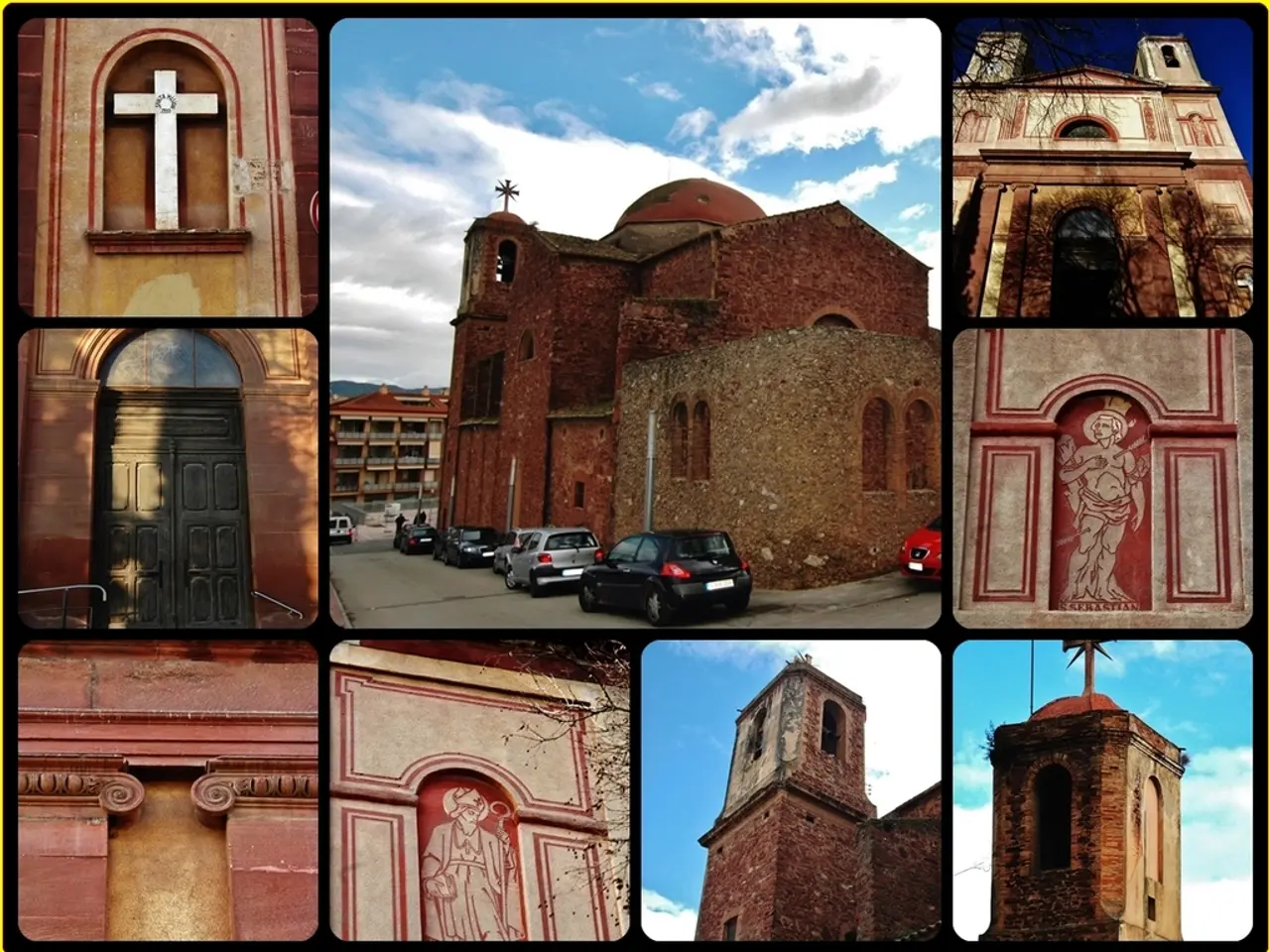Residential Complex Located at One Pool Street, Associated with University College London East
One Pool Street: A New Hub for Learning and Community Engagement
One Pool Street, designed by Lifschutz Davidson Sandilands (LDS), is the gateway building to UCL’s new East campus in Queen Elizabeth Olympic Park. This innovative structure serves as a testament to the university's commitment to blending student accommodation with diverse learning and public engagement spaces, creating a hybrid environment that erases conventional barriers between education and civic life [1][3].
The building's composition consists of a three-storey podium housing interdisciplinary teaching areas and public spaces, topped by two student accommodation towers rising to 13 and 17 storeys. This mix of uses within a compact urban footprint addresses the complex brief of integrating research labs, academic workspaces, a cinema, café, shop, and a public-facing atrium within one structure [1].
Architecturally, the design features functional elements such as stair silhouettes and shading overhangs to mitigate the strong winds often experienced across the park. The building embraces a "fluid zone" concept that softens the division between private and public areas, signaling UCL East’s identity as an exploratory, inclusive, and dynamic space that actively engages both students and the wider community [1].
Positioned on the southern edge of the park, opposite landmarks like the ArcelorMittal Orbit and London Aquatics Centre, One Pool Street sets a confident tone for UCL’s new campus within the broader East Bank initiative—a cultural and educational district that includes major institutions like the V&A Storehouse and Sadler’s Wells East [1].
The building accommodates schools and centres focusing on robotics, sustainable cities, health, and culture, including The Bartlett, the School for Creative and Cultural Industries, and the UCL Robotics and Autonomous Systems hub. Student rooms in One Pool Street are clustered in small flats of 8 to 11 bedrooms, prioritizing communal living [2].
Bedrooms in the student accommodation have en-suites and large windows offering expansive views. The building's top-lit atrium serves as a public foyer and performance space, hosting exhibitions, lectures, and impromptu robotic demonstrations [3]. Rooms can be reconfigured for postgraduate use or visiting scholars, demonstrating the building's future-proofing [4].
Communal terraces and rooftop gardens are available for recreational use and as outdoor laboratories, reinforcing the campus's ambition to fold research into daily life. The building's green roofs and extensive biodiversity measures contributed to the project's BREEAM Excellent and Outstanding ratings for residential and academic areas respectively [5].
The building's facade is composed of precast concrete panels in a palette of whites and greys, with textures that alternate between smooth and rough. At the ends of the towers, triple-aspect common rooms are framed by wraparound glazing, providing social spaces with panoramic views across the park [2].
The design approach to services is exposed and organized for future adaptability, with generous floor-to-ceiling heights and displacement ventilation delivered via circular up stands dubbed "dustbins". Secure zones within the atrium are delineated by fob access rather than turnstiles [6].
All windows in the building, including in student rooms, are fully openable, a departure from restrictive norms in student housing. One Pool Street signals how institutions can engage authentically with their context, educationally, architecturally, and socially [7].
[1] Dezeen. (2021). One Pool Street: Lifschutz Davidson Sandilands completes UCL's new East campus building in Queen Elizabeth Olympic Park. [online] Available at: https://www.dezeen.com/2021/03/22/one-pool-street-lifschutz-davidson-sandilands-completes-ucl-east-campus-building-queen-elizabeth-olympic-park/
[2] UCL. (2021). One Pool Street. [online] Available at: https://www.ucl.ac.uk/one-pool-street
[3] The Architectural Review. (2021). One Pool Street, London. [online] Available at: https://www.architectural-review.com/projects/one-pool-street-london/9082716.article
[4] Design Boom. (2021). Lifschutz Davidson Sandilands completes One Pool Street, UCL East Campus building in Queen Elizabeth Olympic Park. [online] Available at: https://www.designboom.com/architecture/one-pool-street-ucl-east-campus-building-queen-elizabeth-olympic-park-1230713/
[5] BREEAM. (2021). One Pool Street. [online] Available at: https://www.breeam.com/projects/one-pool-street
[6] ArchDaily. (2021). One Pool Street by Lifschutz Davidson Sandilands. [online] Available at: https://www.archdaily.com/956749/one-pool-street-by-lifschutz-davidson-sandilands
[7] The Guardian. (2021). One Pool Street: UCL's new building in Queen Elizabeth Olympic Park. [online] Available at: https://www.theguardian.com/artanddesign/2021/mar/24/one-pool-street-ucls-new-building-in-queen-elizabeth-olympic-park
Students at the University College London (UCL) can immerse themselves in a variety of disciplines, from education and self-development to health and culture, thanks to the facilities offered at One Pool Street. This new hub for learning and community engagement in the Queen Elizabeth Olympic Park not only provides interdisciplinary teaching areas and public spaces for students but also accommodates schools focusing on robotics, sustainable cities, health, and culture. The building's fluid zone concept creates an exploratory, inclusive, and dynamic space that actively engages both students and the wider community, contributing to UCL East’s identity as a hub for education-and-self-development and cultural engagement.




